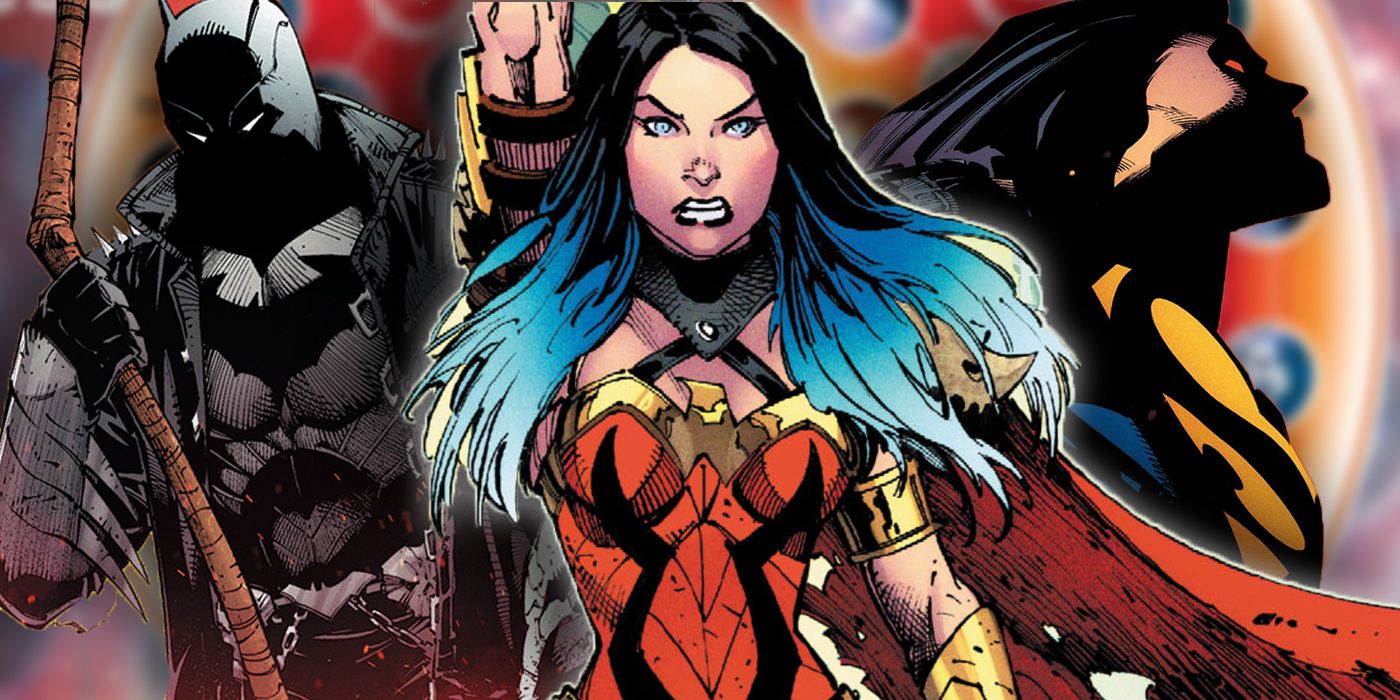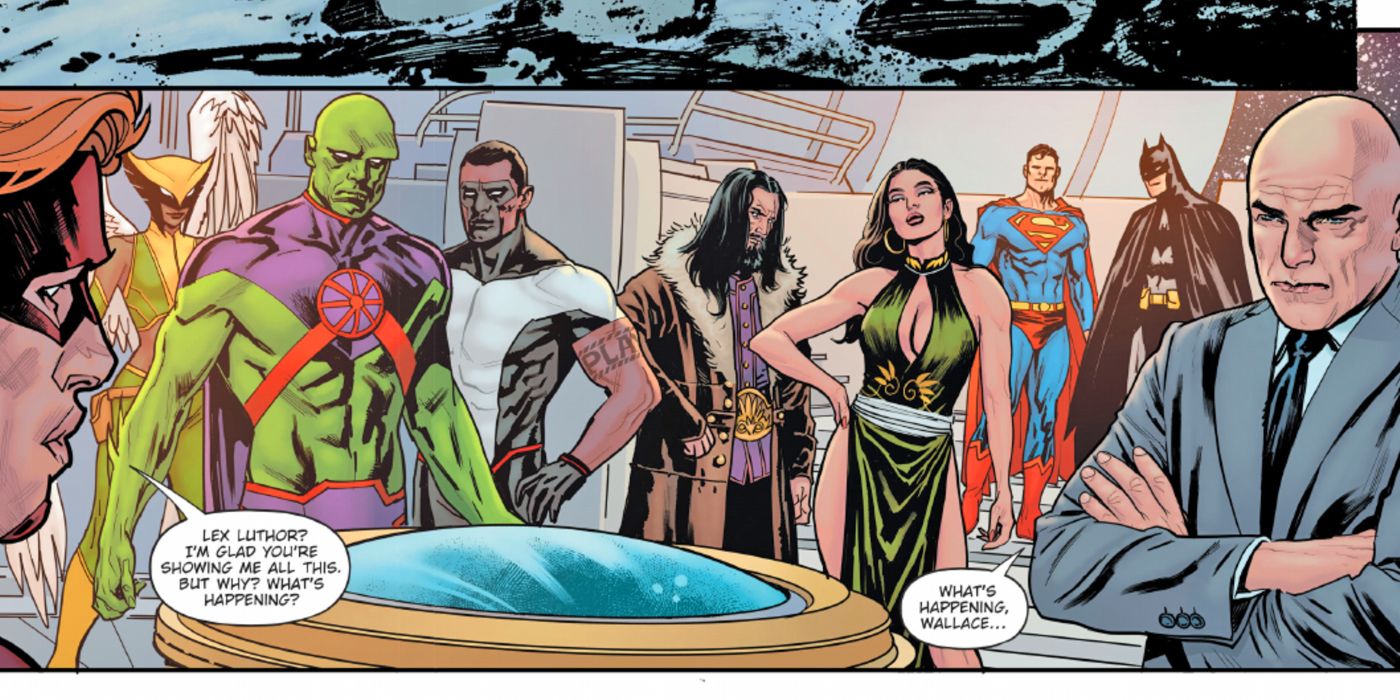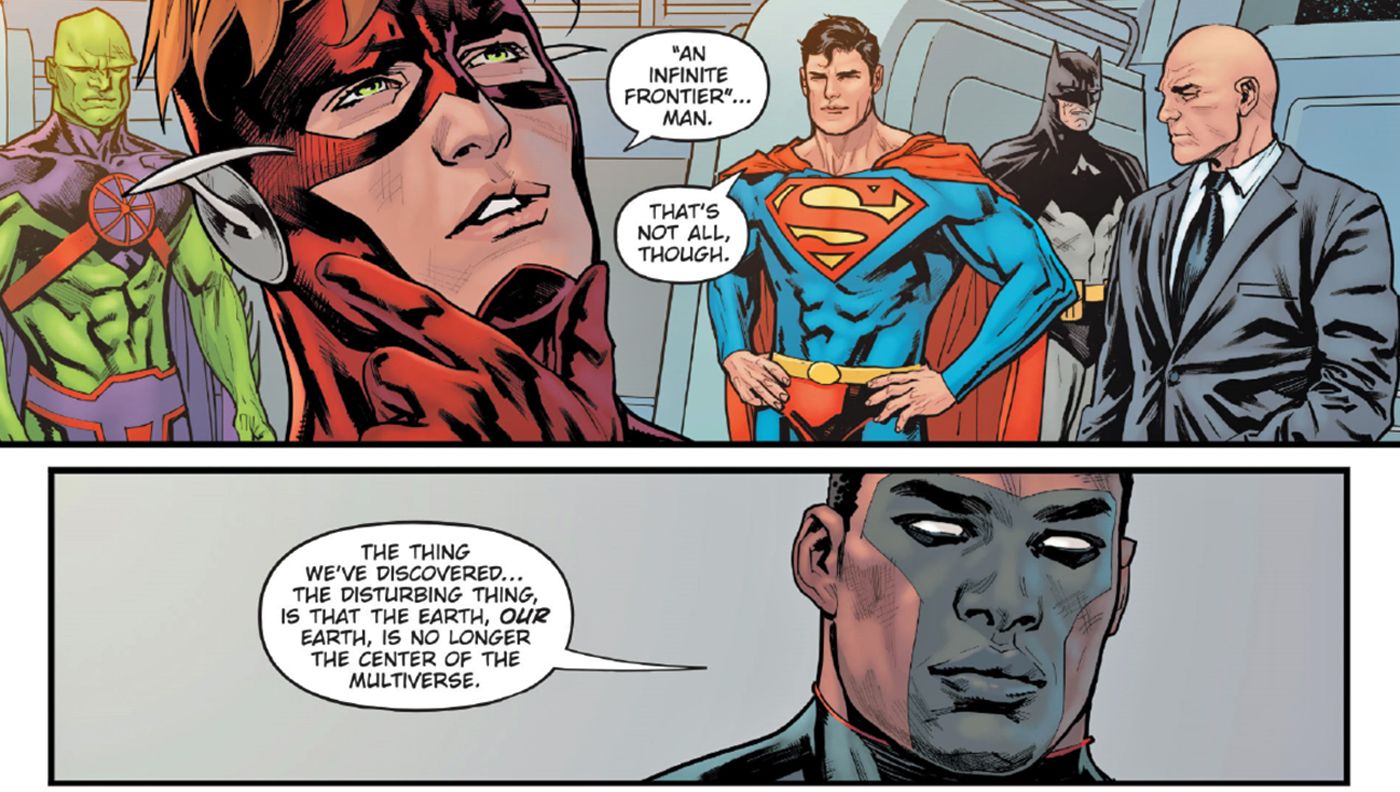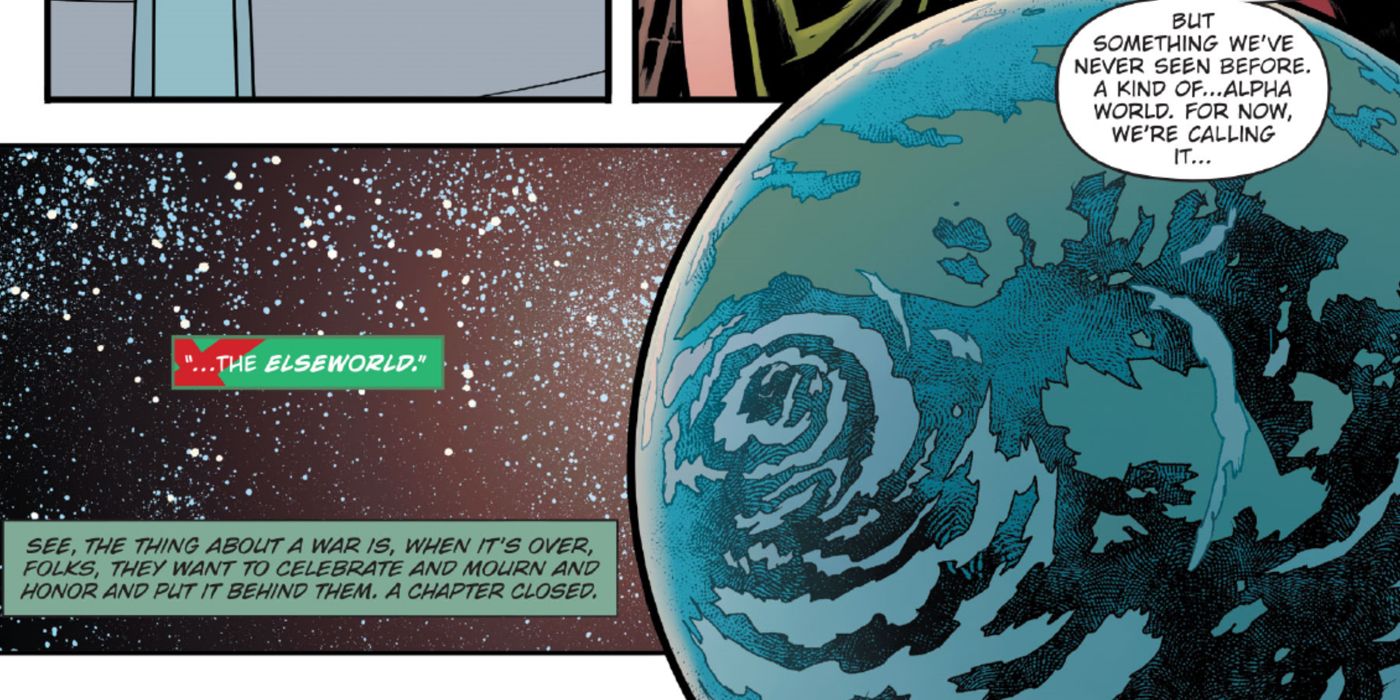WARNING: The following contains spoilers for Dark Nights: Death Metal #7 by Scott Snyder, Greg Capullo, Jonathan Glapion, FCO Plascencia, Tom Napolitano, Yanick Paquette and Bryan Hitch, on sale now.
The concept of Earth-2, and subsequently the multiverse, was first introduced in 1961 in Gardner Fox and Carmine Infantino’s “Flash of Two Worlds!” in The Flash #123. Since then, continuity has been somewhat complicated in the DC Multiverse. Nearly 60 years later, Scott Snyder and Greg Capullo’s Dark Nights: Death Metal features characters with dozens of incarnations, various alternate Earths, and even multiple multiverses containing them. With the conclusion of the series, the DC Multiverse has been rebooted again, and DC continuity along with it.
Past reboots have arguably created more continuity issues than they solved. Rather than DC history being simplified, it’s only become more convoluted. Death Metal’s reboot, though, is different. Instead of mandating which aspects of DC history have been jettisoned and which ones remain -- and expecting readers to keep track of it all -- the series’ epilogue postulates everything that’s happened in the past really did happen, conflicting histories and all. There are once again infinite worlds in the multiverse and infinite multiverses in the omniverse. And because of that, DC has effectively thrown continuity out the window.
In the reborn reality, Earth-0 is guarded by heroes and villains alike in a new space headquarters the group calls the Totality. Aboard the construct, the team discusses the altered nature of the reborn multiverse and reveals there are two significant changes from what had come before. The first is their world is no longer the center of the DC Multiverse. Instead, it’s now presumably one among an infinite array of infinite worlds, rather than the baseline world from where all alternate realities diverge.
Which world can call itself the cosmic center of the multiverse -- and whether that world is even an Earth at all -- remains unknown. There's also not just one world at the center of the multiverse anymore; there's two. Whatever the first world might turn out to be, Martian Manhunter reveals the second world is its “opposite,” calling it an “alpha world” called the Elseworld.
That term, of course, will ring familiar to longtime DC readers. DC published a line of comics known as “Elseworlds” throughout the ‘90s, featuring stories taking place outside mainstream DC continuity. The imprint’s mission statement mandated these stories took place on worlds “that can't, couldn't or shouldn't exist.”
Of course, some of these worlds that “shouldn’t exist” were later incorporated into DC’s new multiverse. The multiverse was reconstituted in the wake of DC’s 2005 Infinite Crisis event. The imaginary nature of these Elseworlds stories, and this new “alpha world” named after them, portend some possible insight into the far larger multiverses that now exist after Death Metal.
If Elseworld is truly akin to its namesake and comprised of imaginary or even impossible scenarios, then its counterpart, in theory, would be a world grounded in a pre-established reality. The new New Earth or Earth-Prime could be the world that defines the core essence of the DC Universe and its characters.
On this world, Superman’s story could start out as the last presumed survivor of a dead planet. Batman’s could begin as a traumatized child’s response to the loss of his parents. But in the other realities stemming from it, the trappings could change -- costumes, personalities and settings could be altered. And the histories could diverge -- battle outcomes could differ, mantles could be passed, and legacies could be tinkered with. In all likelihood, this world could be where the platonic ideals of DC's heroes exist.
On Elseworld, though, anything goes. It could be the world where everything that can’t, couldn’t or shouldn’t happen, does happen. It’s where reality diverges to the point where it’s nothing short of unfathomable. And the alternate realities influenced by Elseworld bring forth an endless set of varied possibilities for these supposed impossible circumstances.
This new multiverse, therefore, gives DC license to essentially do whatever it wants with its characters and still call it “in continuity.” After all, if something takes place anywhere is the new omniverse, then it could be considered “real.”
However, if every imaginable possibility unfolds somewhere in the multiverse, that’s more of a recipe for chaos than any kind of continuity.
Superman exists in the 1940s on one Earth. He exists in the present on another. He’s an American superhero in one, and a Soviet hero in another. He’s a good guy in some realities and a villain in others. To try and sort the countless incarnations of the Man of Steel -- or any character, team or event -- into a cohesive history is nothing short of folly. This kind of reconciliation has traditionally been the very definition of continuity.
If it wanted to, DC could publish a story where baby Kal-El’s rocket ship lands at Woodstock and he’s subsequently raised by hippies. The writer could say it takes place on Earth-1969. And it might be a pretty groovy story. And DC could even say it’s “in continuity.” Except, it clearly isn't.
Continuity sets boundaries defining what a character can and can’t do. To be fair, those boundaries can be pushed, and even broken; that’s what got DC into a continuity quagmire in the first place. But with the canvas of an infinite multiverse -- where even the impossible is now possible -- those boundaries are obliterated. And if there are no boundaries, continuity serves no purpose. If a story fits on one particular Earth in its new multiverse, great. If not, it can just as easily be said to take place on another equally valid one.
DC continuity had become such a mess, there was no real choice but to restructure the rules so it no longer matters, and Death Metal has done exactly that.




